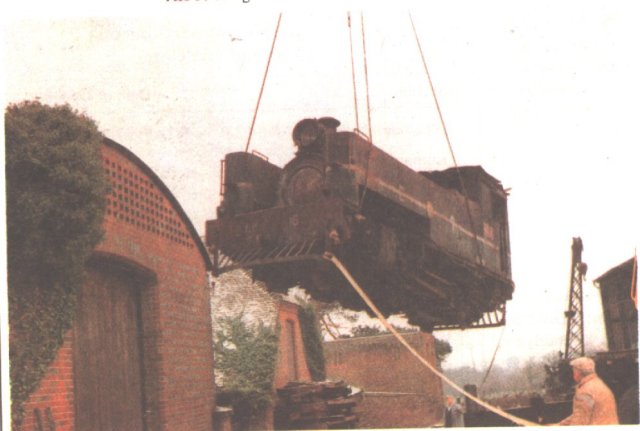
A Railway research scholar, he worked as an engineer with British Rail for thirty years.
(from INDIAN RAILWAYS magazine, July-August 1997)
THE arrival in U.K. after the last Christmas of the narrow gauge steam locomotive AK16, from India marks the end of over two years of discussions and processing by the Phyllis Rampton Narrow Gauge Trust. It also marks eighty years since the engine first went into service on the Kalighat Falta Railway in the southern outskirts of Calcutta.
It was way back in November 1916 when this brand spanking new 2-6-2 side tank locomotive left the workshops of its makers, WG Bagnall Ltd. of the Castle Engine Works at Stafford in England, for its long journey to India. It entered service in February the following year on a 2' 6" gauge railway, built and managed on behalf of the Government by Mcleod & Company, a subsidiary of a London company of managing agents, McLeod Russell & Co. Ltd.
The Kalighat Falta Railway was one of four lines built about this time by McLeod, to open up undeveloped parts of India, all of them in and around Calcutta. This one 26.95 miles long, opened on 28th May 1917 from Gholeshapur to Falta and was extended a further 0.92 miles to Majherat on 7th May 1920.
AK16 was one of the twelve locomotives of this type ordered in August 1914 by the Egyptian Delta Light Railways, and they were allocated their marker's numbers 2022-33. However, intervention of the First World War delayed their despatch and in the event, only six of them went to Egypt and the other six went to various railways in India, by British Government direction. Of these, three went to the Kalighat Falta line in substitution of some other engines ordered from Bagnall, but not built due to the Company being engaged on munitions and other work in connection with the War effort.
So successful were they, that known as the "Delta" class for obvious reasons. McLeod's ordered further engines of the class, as traffic on their railways increased. No less than five more were built, the last three as late as 1953. Cylinder dimensions are 12"xl6", wheel diameter 3' 0" and the all-up weight 28.5 tons.
The Kalighat Falta line closed in 1957 and the engines were transferred to two of the other lines centred on Katwa, northwest of Calcutta, and they remained there until displaced by diesels within the last few years. AK16 Bagnall number 2029, worked the lines to Burdwan and Ahmadpur, which passed into Indian Railway's ownership in April 1966. The AK prefix of the number, indicate Ahmadpur - Katwa.
So after all these years' hard work, and nobody knows how many million miles, this historic British built locomotive returned home. It will join a large collection of other British-built locomotives rescued from all around the world railways, over the last few years by the Trust, and its founder Peter Rampton. Soon it will be restored to its original condition and give enjoyment to children, tourists, railwaymen, steam loco enthusiasts from world over and the general public. With the other engines and other railway equipment in the collection, it will illustrate the days when Great Britain led the world in railway development, and was indeed the workshop of the World. It will present a panoramic view of the world railways, during the past hundred years.
The trustees of the Phyllis Rampton Narrow Gauge Trust have expressed indebtedness to Indian Railways, P&0 and particularly, Mr. L.R. Gosain, a noted Indian steam loco enthusiast and all staff involved for all their help and assistance in locating, selecting and arranging purchase and the movement of this locomotive from Katwa (Eastern Railway) back to England.
